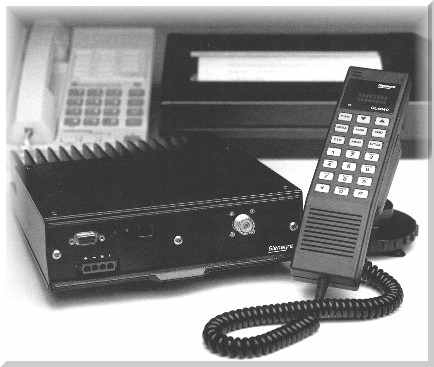
AUTOTEL
While Autotel is not a system employed by the Bell System in the USA, it is interesting nonetheless and as there is little information on it on the web, I have added the material below.
In 2016 I received a message from Peter Trill, one of the designers of the Autotel format, and below are the pertinent sections, put here to assist the historical record:
I worked decades in Radio Engineering for the BC Telephone
Company in Vancouver, British Columbia. In the late 70s, under the Trans Canada
Telephone auspices, all Canadian provincial telephone companies were invited to
submit technical proposals for an automated radiotelephone system that could
replace the existing MTS and IMTS network systems. The impetus for this was the
extensive need for more mobile telephone capacity, especially in the
resource sectors of British Columbia and Alberta that had bigger customer bases
than Toronto or New York.
Only the Telcos in Alberta and BC finally offered proposals
for working systems. Alberta’s system was called Aurora, and was based on
Systcoms/Novatel mobile and network equipment. My company, as a system designer,
established the Autotel System, for which the network equipment was provided by
Glenayre. Although the first Autotel mobiles were Harris Alphas with Glenayre
logic boards and head, the Mobile Specification was an open document, so that
any manufacturer could market a mobile that met the spec. A total of seven
entrants produced working mobiles, but only two companies besides Glenayre came
to market – Spilsbury of Vancouver, and Sedata of Montreal.
Through this development, I was BC Tel’s design authority
for acceptance of all Autotel mobile products. It was interesting to see your
mention of Stephen Inness and Fred Ashe of Xilex. They were working on an
Autotel mobile as well. I knew them both, and spent many hours with Stephen when
he was fine-tuning his logic software. He was a brilliant designer.
Your Chapter 10 says that Autotel was a proprietary format
similar to IMTS. The truth is that it was more similar to the upcoming AMPS
system. Autotel used digital-message handshaking with the base-stations for call
placement and receipt. AMPS does this too, but at a data rate of 10 kbs. The
Autotel signaling data rate will go down an audio facility to the base-station!
In designing the Autotel System, we used all the AMPS ideas that we liked, and
left out those that we could do without. Within the province of BC, it was a
fully automated roaming network, using the Datapac service links among all
network terminals and their base-stations. Early AMPS cellular did not have
roaming until many years later! An interesting requirement of the mobile spec
was for mobiles to have MTS capability for customers in areas without Autotel
coverage until the new network rolled out. Autotel went into service in 1983.
It’s a fact that Autotel outlasted AMPS cellular in BC.
The last Autotel call was placed by me April 1st, 2009. (I also
placed the first call – 1981, I think. I still have that Autotel
phone). Autotel systems were also put into service outside of BC – in
Canada’s Northwest Territories, in the U.S. in a couple of states (Colorado?),
and in China, and possibly Saudi Arabia. With a 25-year history, it should be
remembered as a successful mobile system, reaching a peak of 10,000 BC
subscribers, using several hundred base-stations. Autotel was proposed for Hong
Kong, but did not fly because it was a medium-capacity, not a high-capacity
system.
I’ve attached a picture of the most recent Glenayre
Autotel – the GL 4040 head with a GL 4100 series radio. The Spilsbury radio
was also used in an interim marriage between their radio and Glenayre logic and
head (GL 2035). They later brought out an all-Spilsbury product which sold well.
Concurrently, Glenayre offered their own package with radio (GL4100), logic and
head (GL 4040). This package was an all-singing, all-dancing unit with
multi-format compatibility.
